Salmon Pesto Pasta
Pesto Pasta...With Salmon
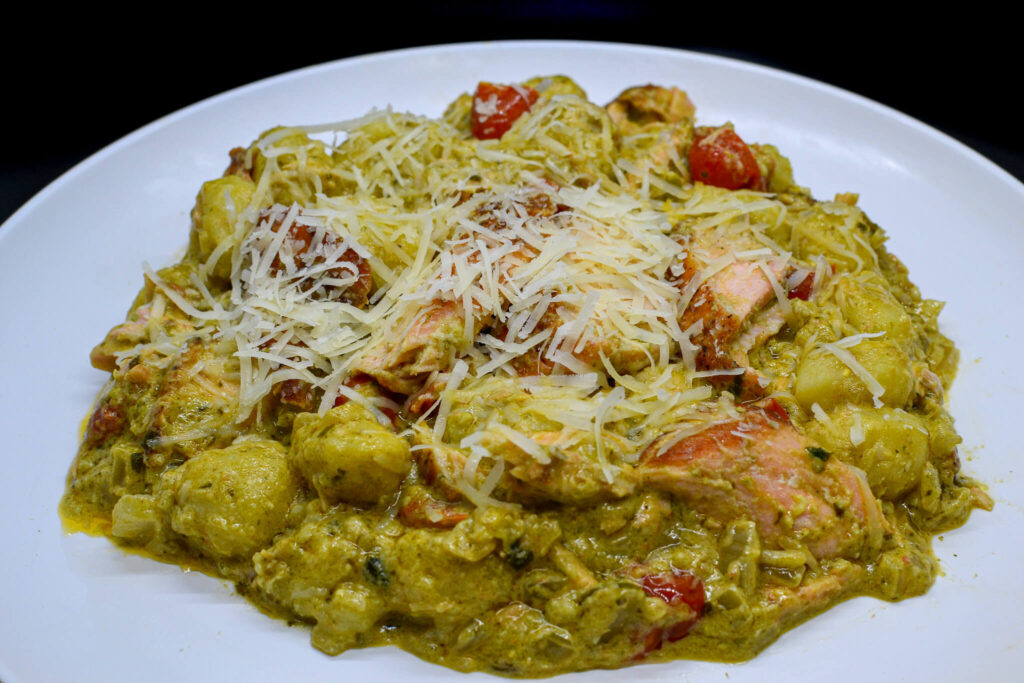
What Is Salmon Pesto Pasta?
Salmon pesto pasta is a pasta dish made with salmon and pesto sauce. The dish typically involves cooking pasta, usually spaghetti or linguine, and then combining it with a sauce made from basil pesto, which is a sauce made from basil, garlic, pine nuts, Parmesan cheese, and olive oil.
The salmon is usually cooked separately, either baked or pan-seared, and then flaked into the pasta dish. The dish can also be garnished with additional Parmesan cheese, fresh basil leaves, or a sprinkle of red pepper flakes for a bit of heat. Salmon pesto pasta is a delicious and easy-to-make meal that combines the bold flavors of salmon and pesto for a satisfying and flavorful dish.
Ingredients For Salmon Pesto Pasta
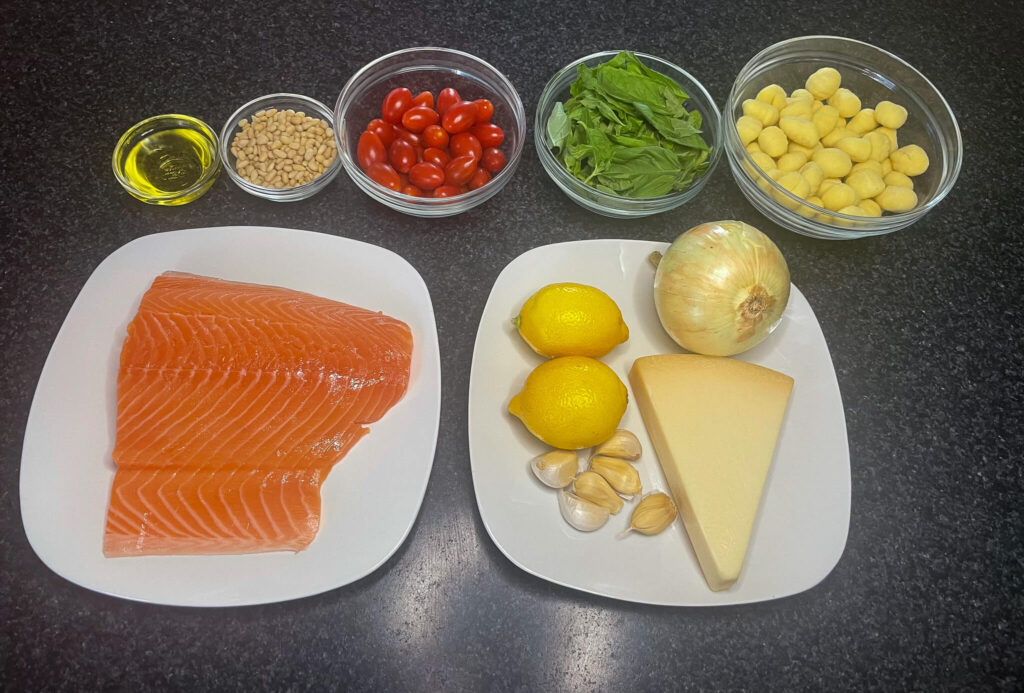

Produce
2 Cups Basil
4-6 Garlic Cloves
2 Lemons
Cherry Tomatoes
Refrigerated
1 Cup Parmesan Cheese
1 Cup Half n Half (optional)

Grocery
1/3 Cup Pine Nuts
1/2 Cup Extra Virgin Olive Oil

Meat
1 Pound Fresh Salmon Filet

Spices
1 tsp salt
2 tsp pepper
How To Make Salmon Pesto Pasta
Step 1
Prep & Cook Salmon
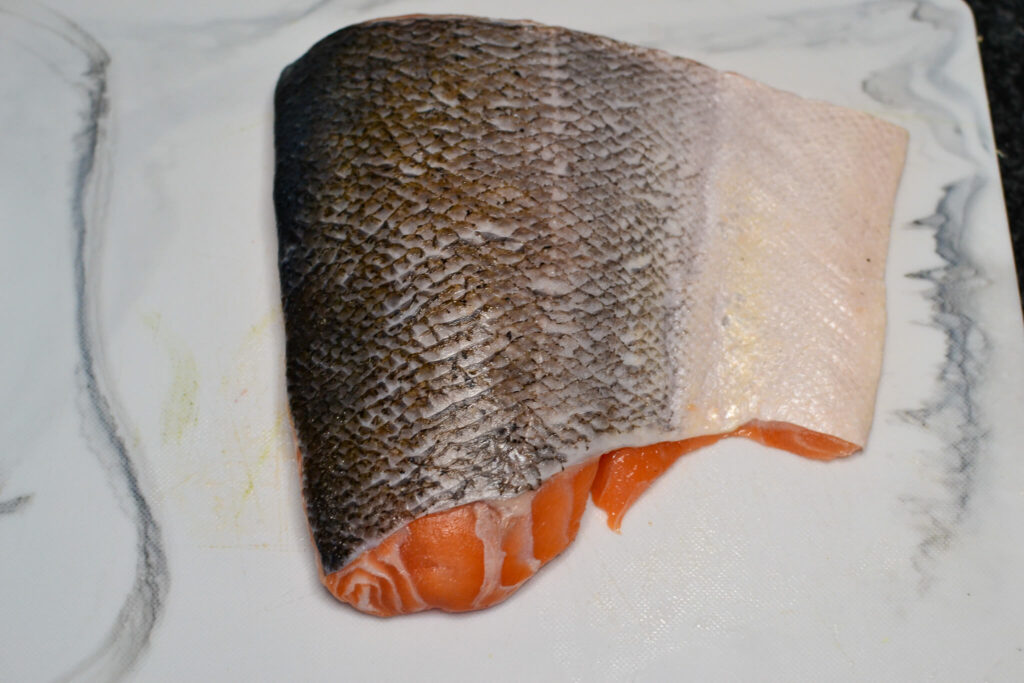
First, we want to remove the skin from the salmon.
Removing the skin from salmon offers several benefits. First, salmon skin can have a strong fishy taste that some people find unappealing. By removing the skin, the flavor of the salmon becomes milder and more palatable for those who are sensitive to fishy flavors.
The skin of the salmon can contain higher levels of contaminants, such as PCBs and dioxins, which can accumulate in the fatty tissues of the fish.
Removing the skin can also make it easier to cook the salmon evenly, as the skin can be thicker in some areas, leading to uneven cooking.

Once the skin is removed, you will need to slice the salmon filet into 2 relatively even pieces.
The main reason to cut the salmon filet in half can help to make it easier to handle and flip during cooking. A large salmon filet can be difficult to maneuver in a pan or on a grill, especially when it comes time to flip it over. By cutting the filet in half, each piece becomes more manageable, making it easier to flip without breaking apart or sticking to the cooking surface.

After the salmon is cut in half, season it with salt and pepper.
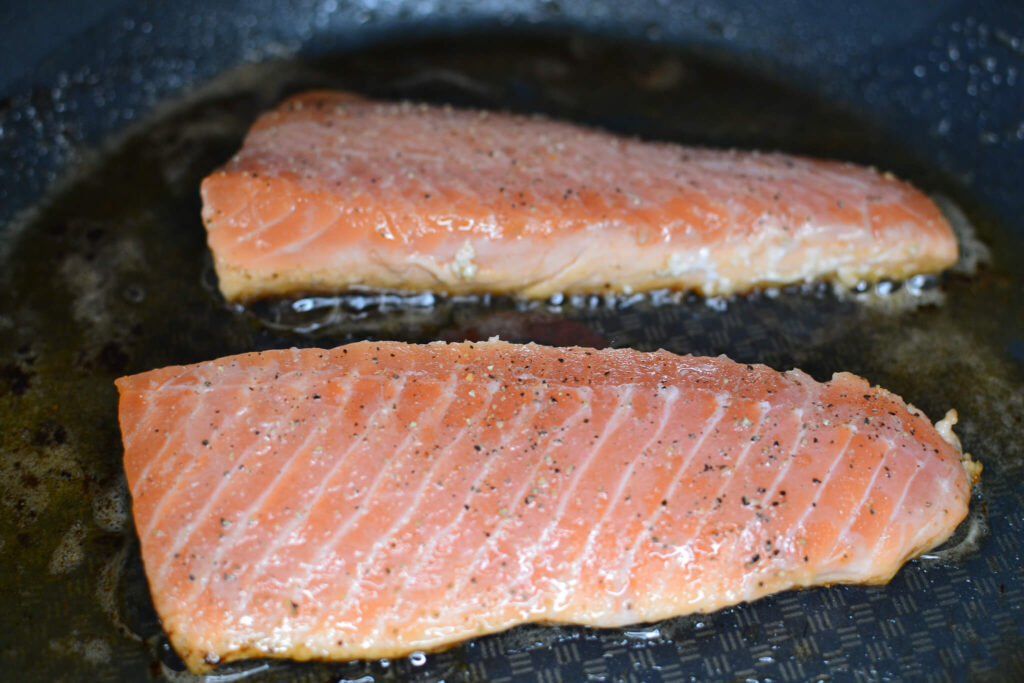
Cook the salmon on medium-high heat for about 4 minutes per side. While the salmon is cooking, add some freshly squeezed lemon to each side. Lemon and Salmon is a classic pairing for many recipes, the bright, tangy flavor of lemon helps to balance out the richness of the salmon, add freshness to the dish, and tenderize the fish, resulting in a delicious bite.

Let your salmon rest while you begin to make the pesto.
Step 2
Make Pesto

Pine nuts are commonly used in pesto because they have a rich, buttery flavor that pairs well with the other ingredients in the sauce. They also have a subtle nuttiness that complements the herbaceous taste of the basil in the pesto.
Another reason why pine nuts are popular in pesto is that they have a creamy texture when blended, which helps to create a smooth and velvety sauce. They also contain natural oils that help to emulsify the pesto, resulting in a thick and cohesive mixture.
Toasting pine nuts before using them in pesto is a common practice that can help to enhance their flavor and texture. Toasting the pine nuts brings out their natural oils, which intensifies their nutty flavor and gives them a slightly crunchy texture.
I chose not to do this, but don’t hesitate to heat them up in a skillet for a few minutes before grinding up in a blender.
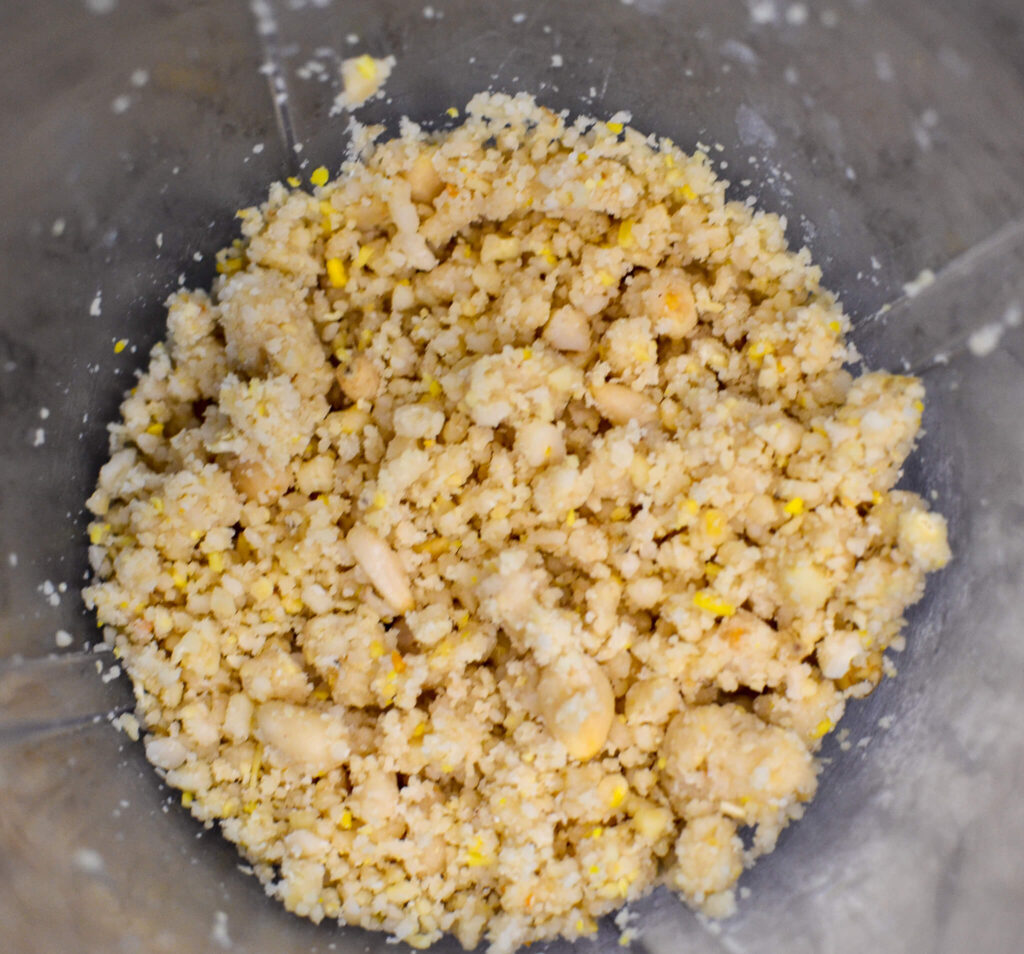
Grind your nuts first before adding the rest of you ingredients.
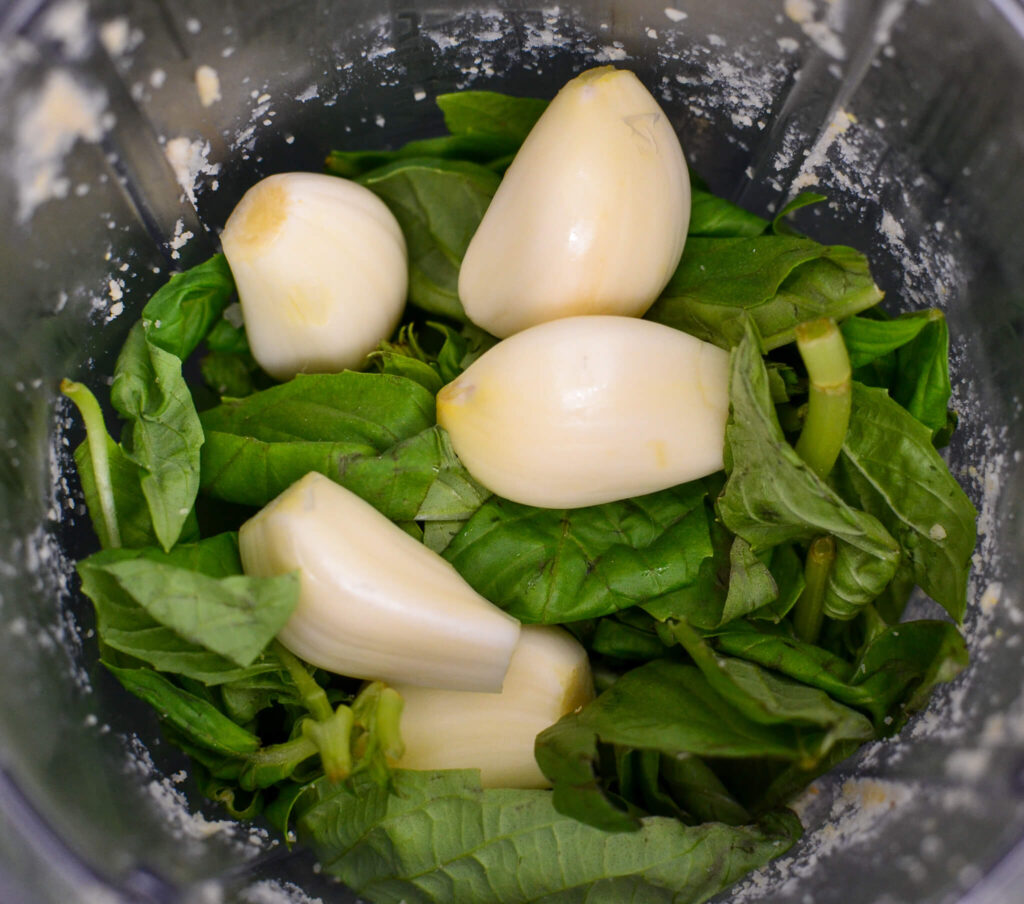
Next, add in:
- 2 cups fresh basil
- 4 garlic cloves
- 1/2 of freshly squeezed lemon
- 1/2 cup of extra virgin olive oil

Then, make sure you shred some fresh parmesan to add to the pesto mixture.
Parmesan cheese is often used in pesto because it adds a rich, savory flavor to the sauce and helps to give it a smooth, creamy texture. Parmesan cheese is a hard, aged cheese that is known for its distinctive nutty and salty taste, which pairs well with the other ingredients in pesto.
When added to pesto, Parmesan cheese helps to enhance the flavors of the other ingredients, particularly the basil and pine nuts. It also helps to thicken and emulsify the sauce, giving it a velvety texture and helping it to cling to pasta or other ingredients.

Once you’ve shredded some cheese, add about 1/2 cup of it to the blender, along with a little fresh ground pepper.
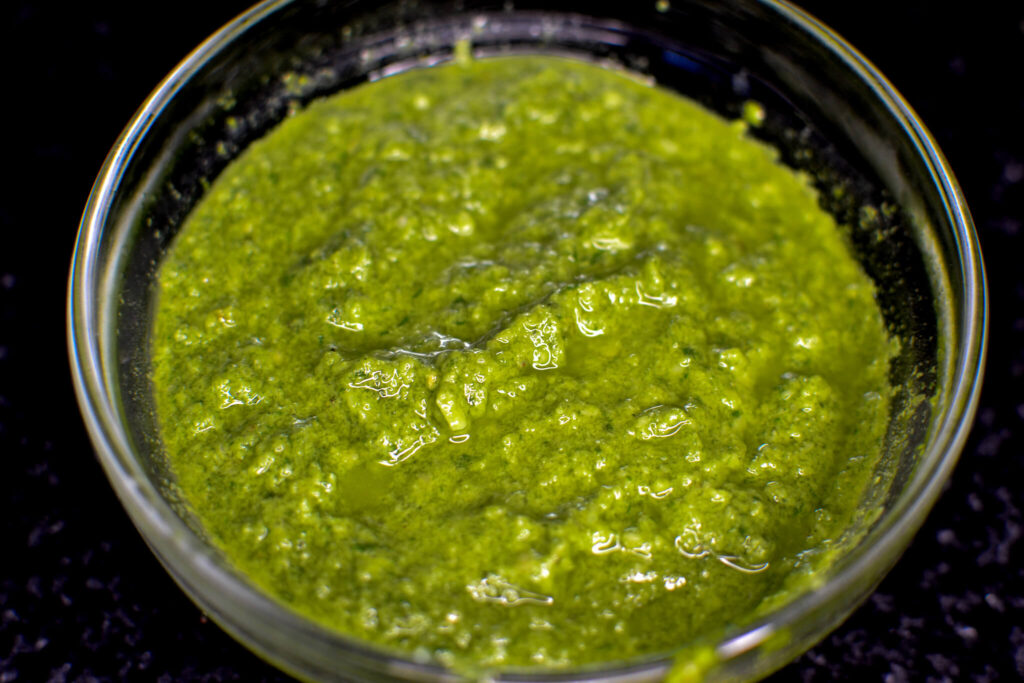
Blend until you get the right texture of the pesto and set aside while you cook the pasta of your choice.
Step 3
Cook Pasta
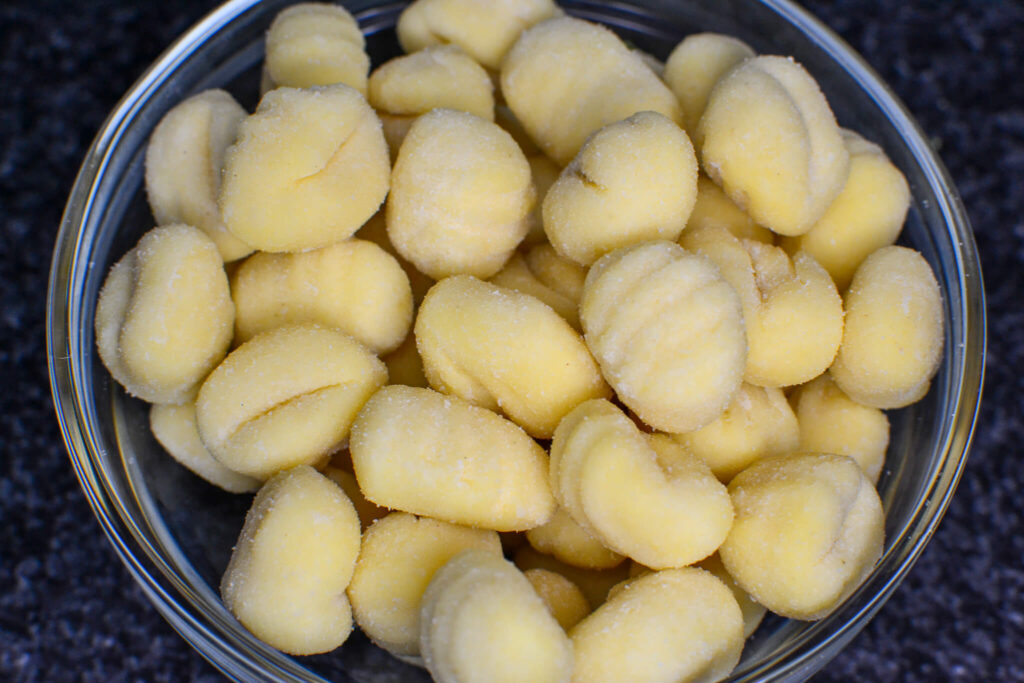
The pasta I chose for this salmon pesto pasta recipe is…Gnocchi!
Gnocchi is a type of Italian pasta that is typically made with potatoes, flour, and sometimes eggs. Gnocchi is a small, soft, and pillowy pasta that is often served with a variety of sauces, such as tomato sauce, pesto, or a butter and sage sauce.
The process of making gnocchi involves cooking and mashing potatoes, then mixing them with flour and eggs to form a dough. The dough is then shaped into small, bite-sized pieces and boiled until they float to the surface, indicating that they are cooked.
I used Rana Skillet Gnocchi, but chose to boil it instead of the recommended skillet directions because I’m a rebel.
This unfortunately backfired because it cooks in 3 minutes but it felt like 30 seconds. If you’re going to follow this recipe, be better than me and either better attention to you boiled gnocchi…or just do the skillet version.
The main reason I did the boiled approach was to ensure I can add some pasta water to the pesto. We will get to that next.
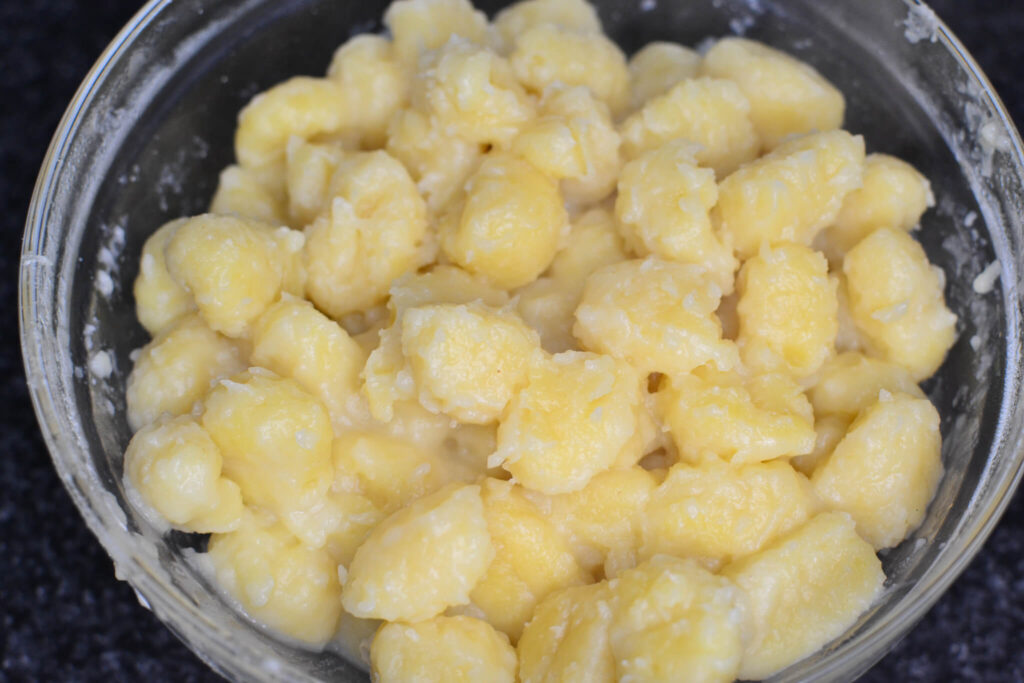
If you overcook gnocchi, it can become mushy and fall apart, losing its distinctive shape and texture. Overcooked gnocchi can also be gummy and heavy, which can make it less enjoyable to eat.
The cooking time for gnocchi is relatively short, typically only a few minutes. It’s important to keep a close eye on the gnocchi while it’s boiling and remove it from the water as soon as it floats to the surface, which indicates that it is cooked through.
As you can see, I certainly overcooked them.
Oops.
Step 4
Make Sauce
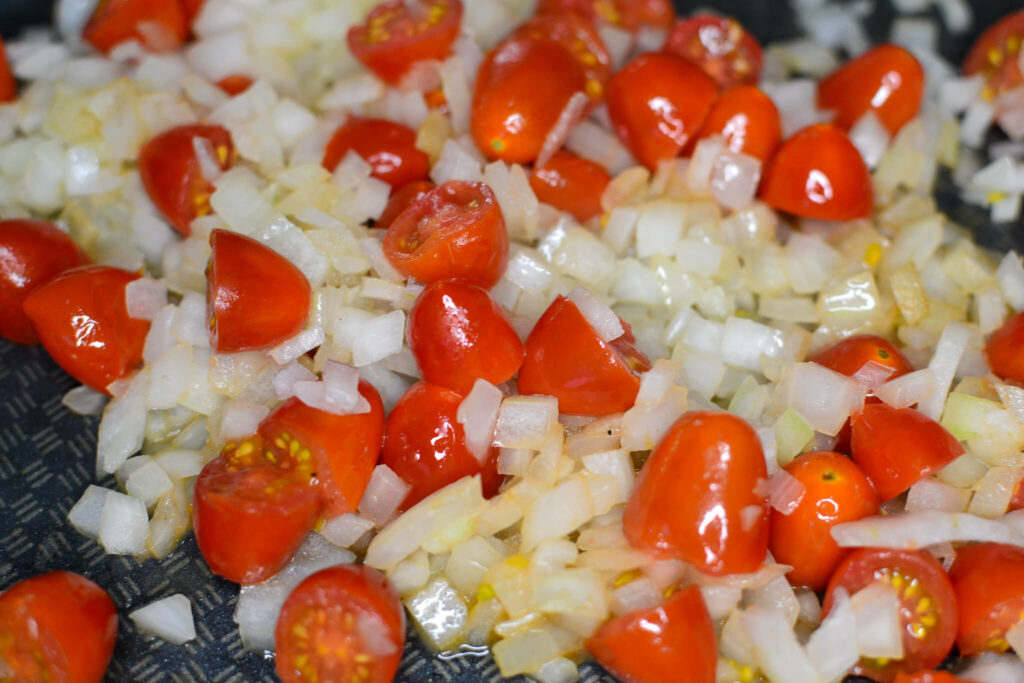
In order to make the pesto sauce, start by sautéing some diced onions and cherry tomators. Let this cook down for about 3 minutes on medium heat.

Once the onions and tomatoes have cooked down a bit, it’s time to add that pesto! I added about 5 tablespoons of the pesto to the skillet, and still had some to save for later.

Continue cooking the pesto on medium heat and add in some pasta water from the gnocchi. Adding pasta water to pesto sauce has several benefits.
First, it improves the texture of the dish. By thinning out and emulsifying the sauce, it creates a smoother, creamier texture that coats the pasta evenly. This ensures that every bite is filled with flavor and the sauce doesn’t clump together.
Additionally, using pasta water enhances the taste of the dish by binding the pesto sauce to the pasta. The starch in the water helps the flavors meld together, creating a cohesive and delicious flavor profile.
Lastly, the pasta water adds moisture to the dish. The salt and starch present in the water help prevent the pasta from drying out, especially if it has been cooked for a longer period of time or if it’s being served as leftovers.
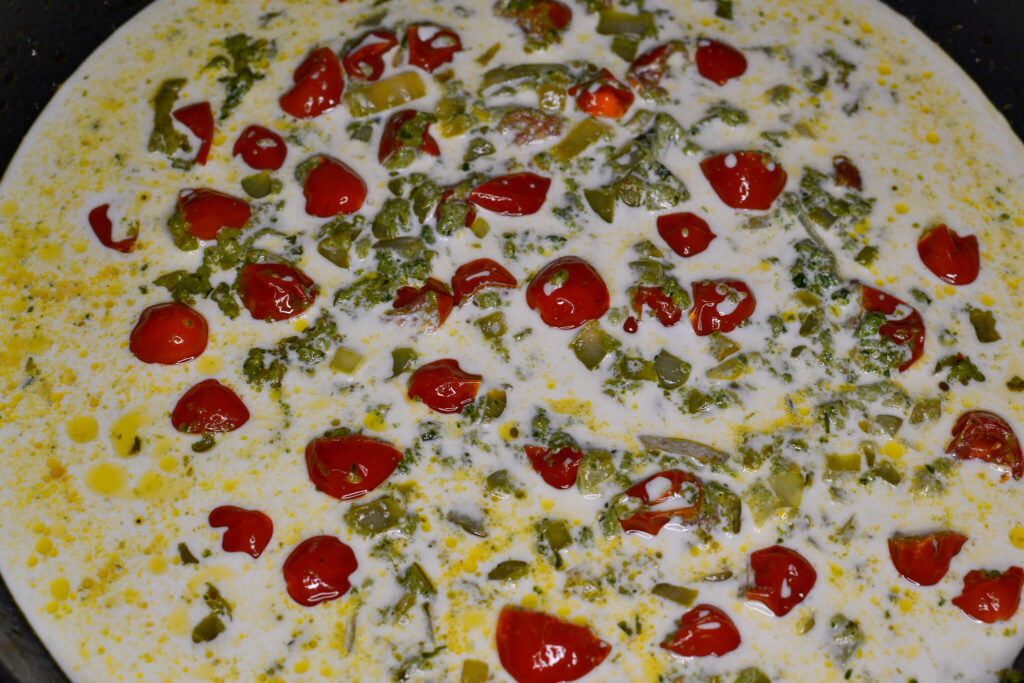
This step is completely optional, but it definitely has some advantages. Add 1 cup of half n half to the skillet if you’re looking for a creamier texture.
Adding cream to a pesto sauce provides a rich and luxurious texture that complements the bold and zesty flavors of the pesto. The cream helps to smooth out the texture of the sauce, making it more velvety and enjoyable to eat.
For those who find the taste of pesto too strong or overpowering, adding cream can help to mellow out the flavor and make it more palatable. This can be especially helpful when cooking for guests with varying taste preferences.
Lastly, adding cream can also make the pesto sauce more versatile, as it can be used to create a range of dishes such as creamy pesto pasta, pesto Alfredo, and pesto cream sauce for meat or fish. This flexibility and adaptability make it an excellent ingredient for home cooks who like to experiment with different flavors and textures in their cooking.
Unfortunately, the bright green color of the original pesto may be muted or lightened by the addition of cream. This is because cream is a white or off-white color and may dilute the green color of the pesto.
While it tastes amazing with the cream…I really wanted the bright, vibrant, green colors that pesto offers. Oh well, maybe next time.
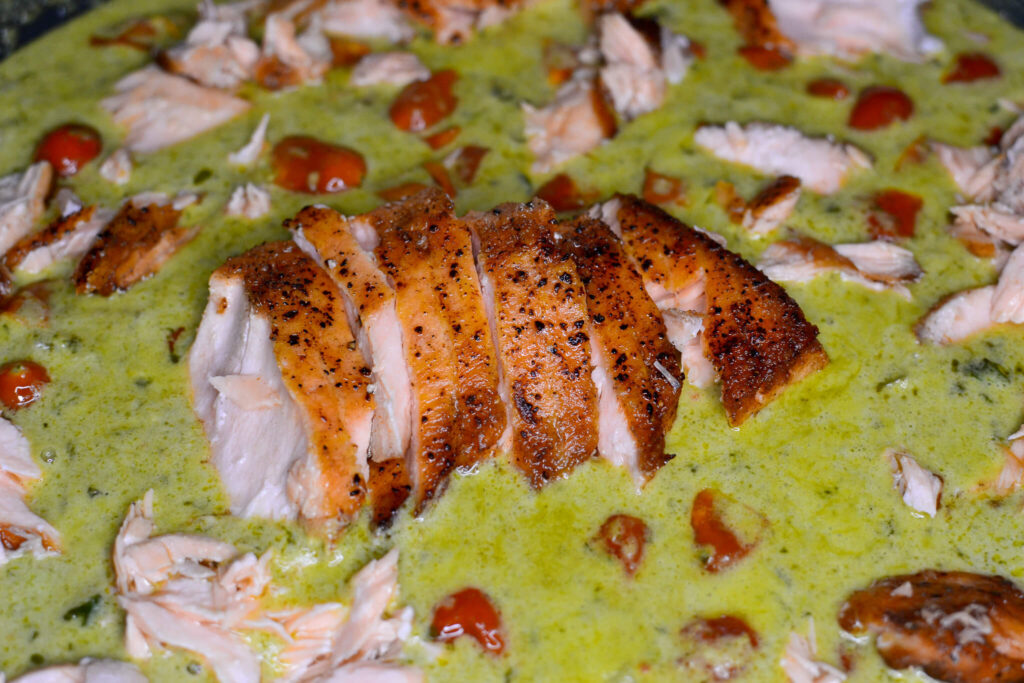
After you’ve let your sauce simmer for about 5 minutes, add in some pieces of salmon.
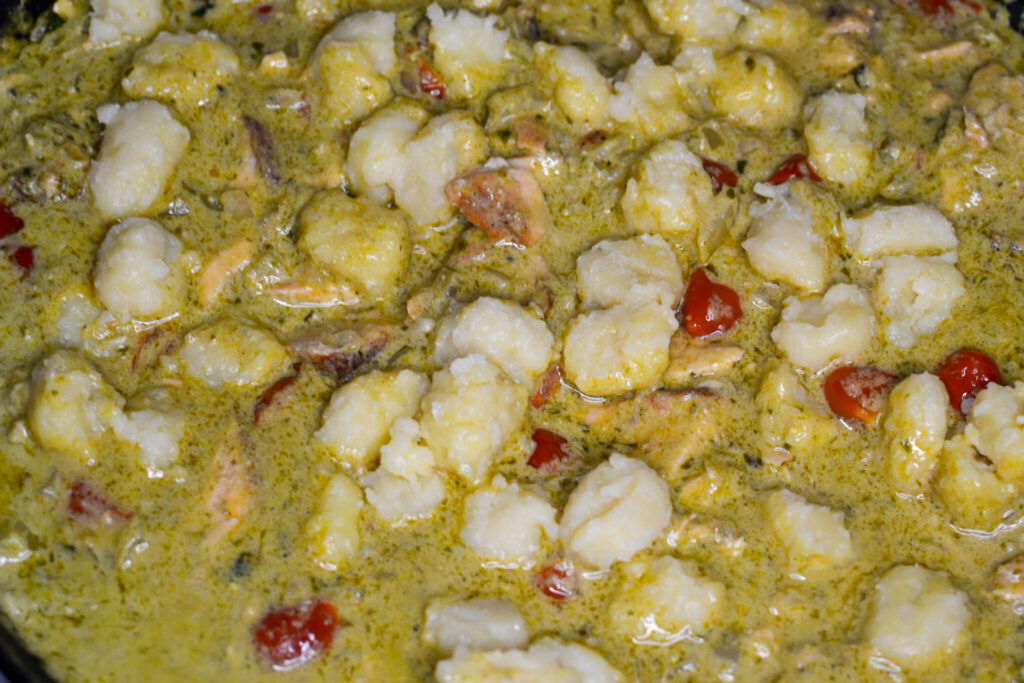
Then add your cooked pasta and mix everything thoroughly.
Step 5
Enjoy Your Pesto Salmon Pasta!

Garnish with some additional parmesan cheese and dig into some creamy salmon pesto pasta.
Enjoy!




